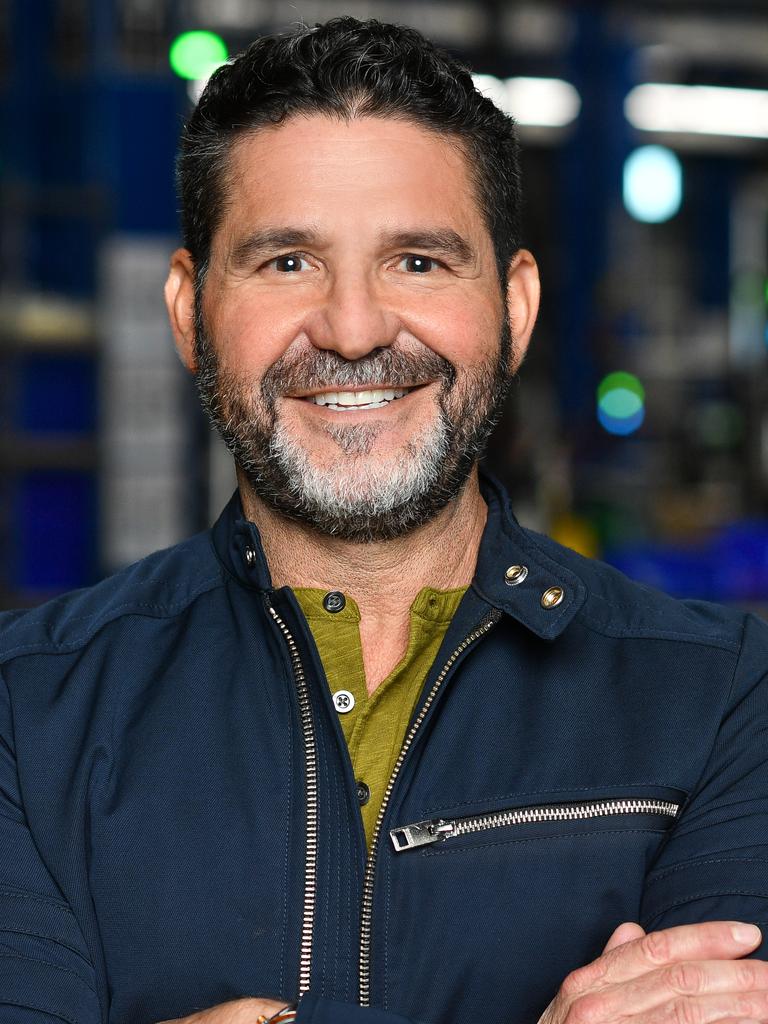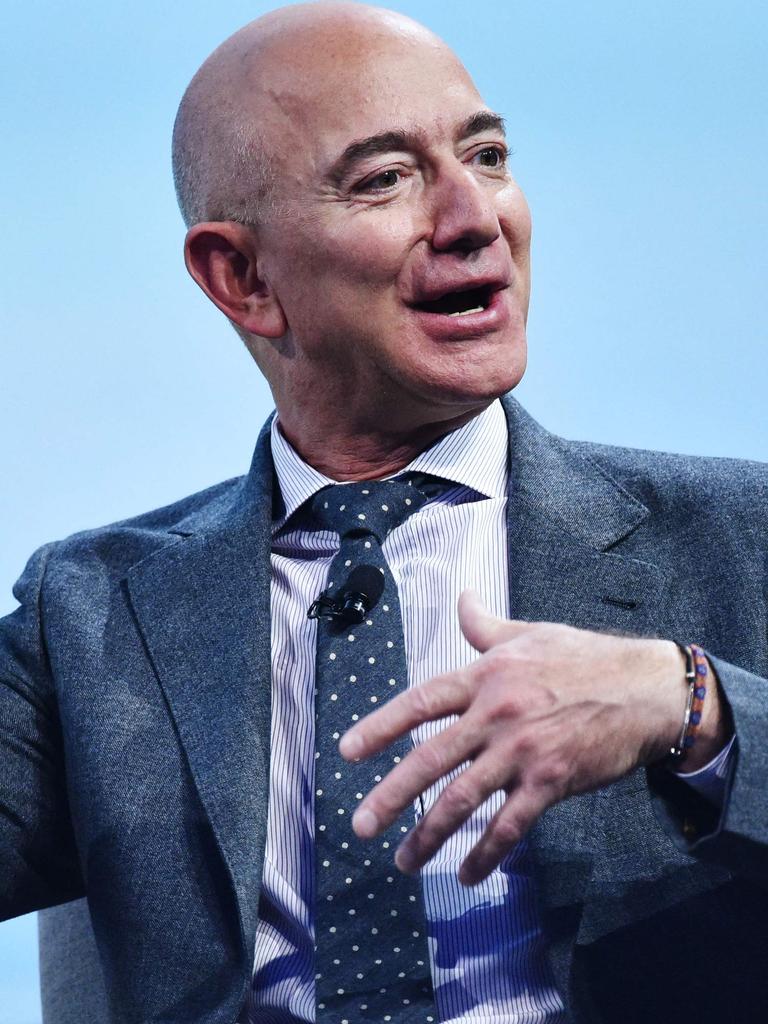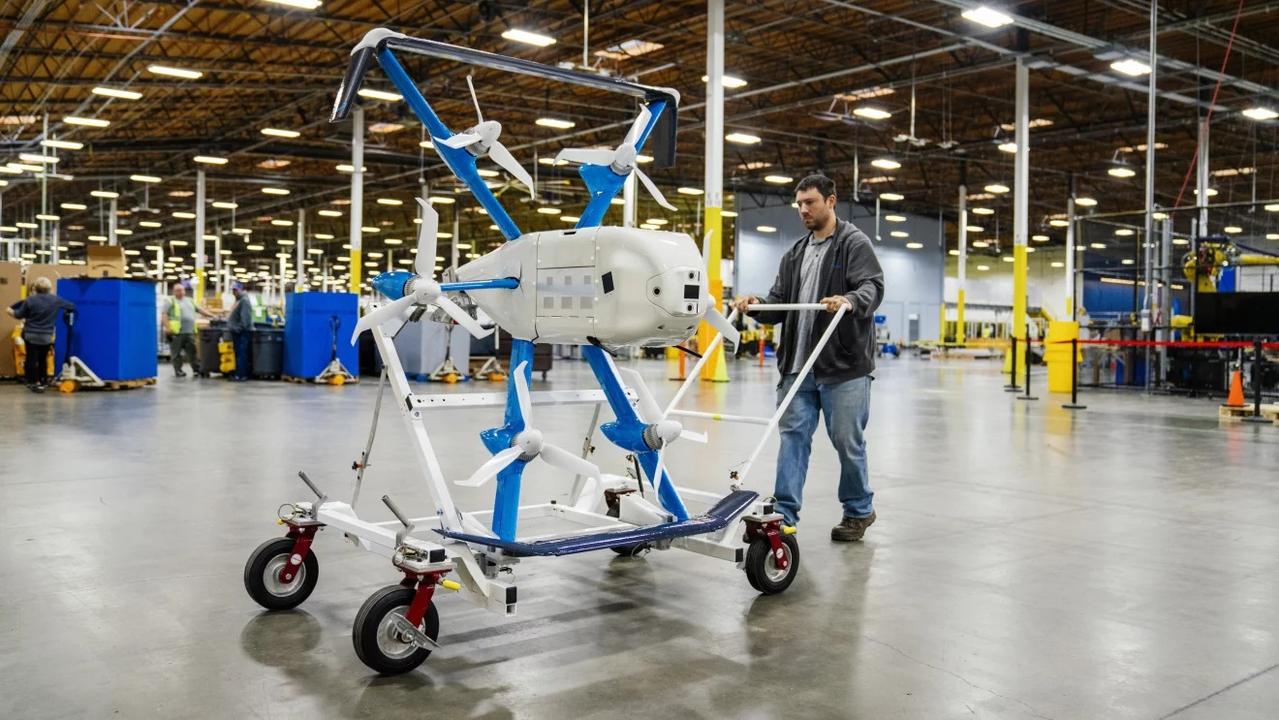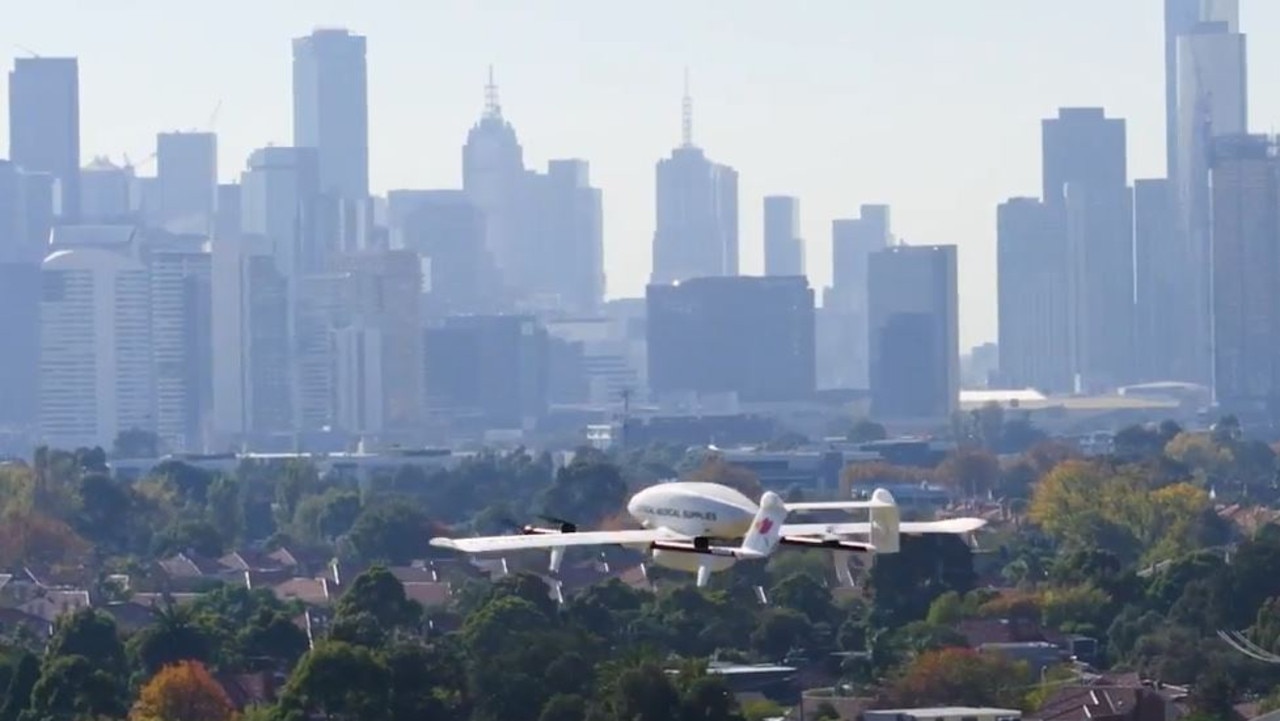Amazon drone delivery service Prime Air means you will never have to leave your house again
Jumping in your car to grab that everyday item you’re missing could become a thing of the past soon, under Amazon’s grand plans.

The high-flying Aussie head of Amazon’s drone delivery service has a simple anecdote to show what he calls the “beauty” of the technology planned to go around the world.
David Carbon, the vice president of Prime Air, said his 96-year-old father recently lost a hearing aid in the back garden of the family’s Melbourne home.
“And anyway, like a week later, we found this thing in the garden,” Mr Carbon told news.com.au.
“And of course, the batteries weren’t working. Now have you ever dealt with somebody who can’t hear? It’s pretty difficult, right?
“What I wouldn’t have given to be able to get a battery for that hearing aid in 30 minutes, rather than my dad telling me he’s going to drive to the store.”
Jumping in your car to grab that everyday item you’re missing could become a thing of the past one day, under Amazon’s grand plans.
Launched in 2013, Prime Air promises to deliver small household items such as electronics, beauty products and prescription medications in 30 minutes or less.
Melbourne-raised Mr Carbon joined the global tech behemoth led by billionaire Jeff Bezos in 2020, having previously worked in the aerospace industry with Boeing.
He’s overseeing designs to eventually deliver 500 million packages by drone each year before the end of the decade.
Whether that includes Australia remains to be seen.
It currently only operates in two sites worldwide – both in the US – but is set to expand into the UK and Italy later this year.
“We’ve designed this thing for a global customer base,” he said.


“And, and so we’ve taken the most strenuous regulatory views broadly, from around the world and designed into them, (so) we can sort of launch anywhere in the world without having to worry too much … if you just take the highest standard – you’re pretty good.
“And we wanted to release the technology around the world. And that’s our focus. And I can’t wait at some point for it to come to Australia.”
How it works
Semi-automated drones fly out from depots stocked with products just like a car would for a regular delivery.
People load the drones with a customer’s order, do the routine checks and keep track as it flies to its programmed destination.
“From there, it’s all semi autonomous, it makes its way to your place,” Mr Carbon said.
“Let’s say you live in an apartment complex, it makes its way to the apartment complex and deploys the package in the available area that’s been designated.
“Whilst making sure there’s no one there.”

Packages are dropped to the ground from a height, with the drones not programmed to land on the ground.
Despite not being controlled from the ground, the drones have technology which can detect obstacles in the air and below.
Mr Carbon said the drones “launch at a level of safety that far exceeds driving into a store or general aviation”.
After going through several iterations, Prime Air’s MK30 drone is now online which Mr Carbon says “was designed working backwards from where we want to be in 2029”.
Slow to launch
It hasn’t all been simple getting Prime Air off the ground, with Bezos initially hoping Amazon drones would be delivering by 2018. That did not happen until 2022.
The service still has not left the US more than 10 years after it was first announced, and the division has had to work through strict regulations around safety and airspace laws.
“Because this is such a new transportation mode specifically for commercially delivering products, by our semi autonomous drone, that’s new,” Mr Carbon said.
“So that regulatory framework didn’t really exist.
“You’ll never hear us saying the regulation is not warranted, or it’s not needed.
“This technology is needed by customers and communities, but it just can’t be the Wild West.”

Mr Carbon said the service had more recently been “going gangbusters” with thousands of packages delivered in the two towns it has operated in – Lockeford, California and College Station, Texas.
The Lockeford depot is soon to close and Prime Air will be setting up Tolleson, Arizona, next to a new Amazon centre.
“California was awesome for us,” Mr Carbon said. “But it is a sparsely-populated rural area. And ... the customers there can be served by other Amazon means.
“But for us, we’ve designed this thing backwards from customers in major metropolitan areas. “So we’re excited to be integrating into the same-day network and getting this show on the road.”
Google drone service Wing has been operating in Canberra and Logan, near Brisbane, since 2021.
Melbourne start-up SwoopAero also operates a drone delivery service for medical equipment.
Drones to replace humans?
The rise of new technologies raises the obvious question of how AI and robotics could impact on people and their employment.
Several fast food companies in America have begun to use AI software in their drive-throughs, with experts warning it’s a sign of “major disruption” in the near future.
Mr Carbon said Prime Air would not mean the end of human delivery drivers, saying “it’s just complementary technology” to what already exists.
“If you think about it, there really isn’t a way to deliver in major metropolitan areas, some of the stuff people want,” he said.
“And as I was reminded this morning, we’re never going to deliver a fridge on a drone.
“So there’s lots of other things that people could want on Amazon, that this technology is not suited to. So you know, we’re not concerned about that.”





